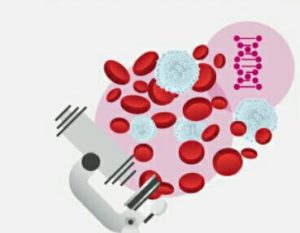
The incidence of breast and ovarian cancers and mortality due to these cancers in women worldwide is increasing where about 1.7 million new cases were diagnosed worldwide in 2012. This increase in cancer rates carries tremendous socio-economic, emotional, and public health implications. A key factor to the successful treatment of these cancers is early detection and improving prevention which can aided by the identification of biomarkers that can predict the susceptibility to these cancers. Consequently, this will reduce both the cost of treatment and the rate of mortality and morbidity.
It is already well established that females who carry BRCA1 mutations are more likely to develop aggressive breast tumors before the age of 50. As a tumor suppression gene, when BRCA1 is unmutated or unaltered, it is actually protective against cancer (but when mutated, it can promote tumor growth). While mutation is one mechanism through which BRCA1 can become harmful, other mechanisms, such as DNA methylation (which is essentially a mechanism acting as the on/off switch for many of our genes) can also deactivate BRCA1 and other cancer related genes leading to cancer formation.
While mutations of BRCA1 have been found to be responsible for the hereditary type of breast and ovarian cancers, to date there has been no evidence of inheritance for the methylated BRCA1.
 Evidence of epigenetic inheritance from mother to daughter
Evidence of epigenetic inheritance from mother to daughter
In a recent study published in Clinical Epigenetics, we examined the incidence of methylated BRCA1 genes in white blood cells of adult and newborn females. In addition, the study investigated the possible transmission of methylated BRCA1 from mother to daughter.
A total of 865 females, including 290 mother-newborn pairs, were screened for the presence of methylated BRCA1 in their white blood cells. The results showed that the frequency of methylated BRCA1 was similar in both adult and newborn females (9.3% and 9.9%, respectively); indicating that methylated BRCA1 is present from the early life of the carriers.
In addition, we discovered that the MGMT gene, which is another gene that is known to be implicated in the development of breast and ovarian cancers, is also methylated in white blood cells. Just like BRCA1, when MGMT is methylated, it poses more of a cancer threat to the carrier. Our results demonstrated that, similar to methylated BRCA1, the frequency of methylated MGMT was similar in both the adult and newborn females (13.1% and 12.3%, respectively). This result indicates that methylated MGMT is also present from the early life of the carriers.
What is exciting about our study is that it shows, for the first time, the transmission of methylated BRCA1 and MGMT from mother to daughter. We found, in the mother-newborn pairs, that 20% and 31% of the mothers, who carry methylated BRCA1 and MGMT, respectively, had daughters who also tested positive for methylation of those genes.
On the other hand, the study also found that pregnancy might reverse the methylation of these genes as the frequencies of methylation of the two genes were lower in the mothers as compared to non-pregnant females. We hypothesize that the reduction of methylation of these genes during pregnancy could be a protective mechanism to protect against breast cancer; however, further studies are needed to verify this.
What risks do methylated BRCA1 or MGMT in white blood cells carry for women?
 In order to understand the consequences of the presence of methylated BRCA1 and MGMT genes in white blood cells in healthy females, we examined the incidence of methylation of these two genes in both breast and ovarian cancer patients. Our results confirmed those we previously observed (in our study published in BMC Cancer), which is that 18% of breast cancer patients have methylated BRCA1 in their WBC, while 15% have methylated MGMT.
In order to understand the consequences of the presence of methylated BRCA1 and MGMT genes in white blood cells in healthy females, we examined the incidence of methylation of these two genes in both breast and ovarian cancer patients. Our results confirmed those we previously observed (in our study published in BMC Cancer), which is that 18% of breast cancer patients have methylated BRCA1 in their WBC, while 15% have methylated MGMT.
Was the same pattern observed for ovarian cancer? We found that 15% of the ovarian cancer patients have methylated BRCA1 while 21% have methylated MGMT. These results confirm that females who carry either methylated BRCA1 or MGMT are at higher risk of developing breast and ovarian cancers.
Implications and future research
The fact that the methylation of these genes is present from the early life of the carriers suggests their possible use as biomarkers for early detection of females susceptible for breast and ovarian cancers. Such a tool could help predict (and possibly even prevent) up to 30% of breast cancer and 35% of ovarian cancer cases. While more research is needed to develop reliable and accurate tests to identify these epigenetic markers, we hope our study has laid the foundation for such research and will contribute to the eventual reduction in breast and ovarian cancer worldwide.
Comments